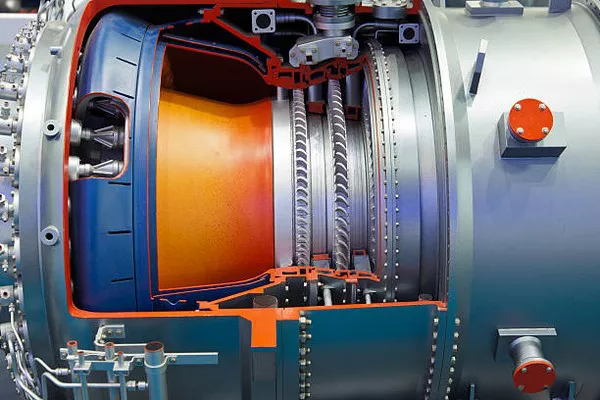Compressors play a pivotal role in various industrial applications, providing the necessary power to generate compressed air for a wide range of tasks. To optimize compressor performance and prolong its lifespan, engineers often employ various components and mechanisms. One such critical component is the compressor unloader valve. This article delves into the inner workings of a compressor unloader valve, explaining its function, types, and importance in ensuring efficient compressor operation.
The Basics of Air Compression
Before we delve into the intricacies of a compressor unloader valve, it’s essential to grasp the fundamentals of air compression. Compressors are devices that increase the pressure of a gas, typically air, by reducing its volume. This process involves two key components: the compressor itself and the motor driving it. In reciprocating compressors, a piston is used to compress the air within a cylinder. As the piston moves, it alternately draws in air and compresses it, raising the pressure before it is discharged.
The Role of the Compressor Unloader Valve
Compressors often operate in cyclic fashion, turning on and off as needed to maintain the desired pressure in the air storage tank or system they serve. However, during startup, compressors face a significant challenge: the initial load, which can be several times greater than the continuous running load. This surge in load can lead to increased wear and tear on the compressor’s motor and associated components, reduced energy efficiency, and potential damage to the equipment.
To address this issue, engineers have developed a solution in the form of the compressor unloader valve. The primary function of this valve is to alleviate the load on the compressor during startup, ensuring a smooth and controlled acceleration.
How Does a Compressor Unloader Valve Work?
A compressor unloader valve operates on a simple yet effective principle: it unloads the compressor of its working pressure before startup, thereby reducing the initial load. Here’s a step-by-step breakdown of how it accomplishes this:
Compressor Startup: When the compressor is switched on, it begins to run, initiating the compression process. Initially, the unloader valve is closed.
Pressure Buildup: As the compressor runs, it starts building up pressure in the air storage tank or system. The unloader valve remains closed during this phase.
Pressure Setpoint Reached: Once the pressure reaches the desired setpoint (typically the cut-out pressure), the unloader valve is triggered to open.
Compressor Unloading: With the unloader valve open, it releases the air from the compression chamber or cylinder head. This effectively unloads the compressor, preventing it from pumping against the already pressurized system. The compressor continues to run without actively compressing air.
Reduced Load: By unloading the compressor, the startup load is significantly reduced, preventing the motor from overloading and minimizing wear and tear on the compressor’s components.
Pressure Maintenance: The unloader valve remains open until the pressure falls below a certain setpoint (typically the cut-in pressure), at which point it closes, and the compressor resumes normal operation, actively compressing air to maintain the set pressure.
This sequence ensures that the compressor starts under minimal load, reducing stress on the system and enhancing its overall efficiency.
Types of Compressor Unloader Valves
Compressor unloader valves come in various designs, each tailored to specific compressor types and applications. Here are the primary types:
Pilot-Operated Unloader Valve: This type of unloader valve uses a separate pilot valve that operates based on the pressure within the system. When the system pressure reaches the cut-out pressure, the pilot valve triggers the unloader valve to open, unloading the compressor. Pilot-operated unloader valves are commonly found in large reciprocating compressors.
Centrifugal Unloader Valve: Centrifugal unloader valves are often used in smaller reciprocating compressors. They operate using centrifugal force generated by the compressor’s rotation. When the compressor starts, the centrifugal force pushes open the unloader valve, unloading the compressor until the desired pressure is reached.
Pressure Switch-Controlled Unloader Valve: This type of unloader valve is controlled directly by a pressure switch. When the pressure in the system reaches the cut-out pressure, the pressure switch sends a signal to open the unloader valve. Conversely, when the pressure falls to the cut-in pressure, the pressure switch closes the valve, allowing the compressor to resume active compression.
Unloaders for Rotary Screw Compressors: Rotary screw compressors use different unloading mechanisms, such as slide valves or variable-speed drives, to adjust capacity based on demand. These mechanisms achieve a similar result by reducing or stopping compression when the system’s air demand is low.
Importance of the Compressor Unloader Valve
The compressor unloader valve serves several critical purposes in compressor operation:
Preventing Overload: By unloading the compressor during startup, the unloader valve prevents overloading the motor and associated components, reducing the risk of damage and extending the compressor’s lifespan.
Energy Efficiency: Unloading the compressor when not actively compressing air conserves energy, leading to improved efficiency and lower operating costs.
Stress Reduction: Minimizing the initial load on the compressor reduces stress on the entire system, promoting smoother operation and reducing maintenance requirements.
Pressure Control: The unloader valve helps maintain the desired pressure within the system, ensuring consistent performance and preventing pressure fluctuations.
Conclusion
In the world of compressed air systems, the compressor unloader valve plays a vital role in ensuring smooth startup, energy efficiency, and overall reliability. Understanding how this essential component works and its various types is crucial for anyone involved in compressor operation and maintenance. By alleviating the initial load on the compressor, the unloader valve contributes to the longevity and efficiency of these critical machines, making it an indispensable part of industrial compressed air systems.

